
http://www.iaeme.com/IJM/index.asp 21 editor@iaeme.com
International Journal of Management (IJM)
Volume 9, Issue 3, May–June 2018, pp. 21–31, Article ID: IJM_09_03_003
Available online at
http://www.iaeme.com/ijm/issues.asp?JType=IJM&VType=9&IType=3
Journal Impact Factor (2016): 8.1920 (Calculated by GISI) www.jifactor.com
ISSN Print: 0976-6502 and ISSN Online: 0976-6510
© IAEME Publication
DEALING THE SUSTAINABILITY
CHALLENGES WITH LEAN SIX SIGMA
FRAMEWORK
Parag Kalkar
Director, Sinhgad Institute of Management,
Savitribai Phule Pune University, Pune
Anand Chitanand
Research Scholar, Sinhgad Institute of Management,
Savitribai Phule Pune University, Pune
ABSTRACT
Sustainability has become a very sensitive subject of the 21
st
century all over the
world, especially for the business organizations, as the planet earth is dragged in to the
effects of climate change. In the years to come this subject is going to be the top most
agenda for all the countries, governments, public and private organizations. Companies
will slowly exhaust all low hanging efforts to show the improvements in achieving the
sustainability goals and the time will come when companies will have to adopt some
structured and disciplined methodologies to achieve the stringent sustainable
development targets and demonstrate consistent results to all the stake holders.
The study of sustainability reports of select Indian companies reveals a need for a
structured methodology for analysis and improvement actions such that significant
improvements are seen and sustained over a long period of time.
Lean Six Sigma is a proven methodology used by several organizations to achieve
sustainable improvement results. This research paper suggests use of Lean Six Sigma as a
strategic framework for Sustainability. The Sustainability objectives are required to be
part of organizational goal tree. Six Sigma tools also help in prioritizing the projects
along with other business initiatives with equal weightage to social and environmental
initiatives. Lean Six Sigma improves the process efficiency, eliminates waste, making the
Sustainability initiatives profitable for the organization.
Keywords: Sustainability, Sustainable Development, Six Sigma, Lean Six Sigma
Cite this Article: Parag Kalkar and Anand Chitanand, Dealing the Sustainability
Challenges with Lean Six Sigma Framework, International Journal of Management, 9 (3),
2018, pp. 21–31.
http://www.iaeme.com/IJM/issues.asp?JType=IJM&VType=9&IType=3

Dealing the Sustainability Challenges with Lean Six Sigma Framework
http://www.iaeme.com/IJM/index.asp 22 editor@iaeme.com
1. INTRODUCTION TO SUSTAINABILITY
The word Sustainability is more being used for the human sustenance on the planet earth from
1980s. Even though Sustainability does not have a unique definition as yet, most widely used
definition came from the concept of ‘Sustainable Development’ put forth by the Gro Harlem
Brundtland Commission of United Nations on March 20, 1987 (Remigijus Ciegis et al, 2009).
The commission defined Sustainable development as ‘the development that meets the needs
of the present without compromising the ability of future generations to meet their own
needs.’
Even though Brundtland’s definition is widely used, different people with different
perspectives have come up with different definition to suit their perspective. One of the major
reasons for this disagreement is because there are two prominent points of view viz.
Ecologists’ view and Economists’ view. Ecologists emphasize on the preservation of the
status of the ecological system while the economists emphasize on maintaining and improving
the standard of living for human beings. There is also confusion in the understanding of
quality of life and standard of living. Humans want quality of life and industrialists want
standard of living.
It needs to be appreciated that entire world is a single system. Once we understand this,
we realize that pollutions caused at one part of the world affects the air quality in other part,
or the pesticides sprayed in one country could harm fish stocks off the coast of some other
country. Therefore, the actions and decisions taken by earlier generations are going to impact
the current and future generations across the globe.
World Bank’s report ‘Beyond Economic Growth’, first printed in year 2000, says that the
understanding of ‘development’ is different among countries and individuals. The meaning of
development is beyond merely economic growth to include things such as freedom, equity,
education, health, safe environment, and much more. However, the economic development
takes the precedent over the other important parameters of development.
The report ‘Trends in Global CO2 Emissions – 2014 Report’ published by PBL
Netherlands Environmental Assessment Agency (2014) points out that the global carbon
dioxide emissions from fossil fuel combustion and from industrial processes (cement and
metal production) increased to a new high in 2013 of 35.3 billion tonnes. Top 3 emitting
regions in 2013 which together accounted to 55% of the total global CO2 emissions were
China, United States and European Union. There have been several summits including the
recent at Paris in November 2015. However, the developed nations are not ready to retard
their economic activity nor they want to take the responsibility to fund the developing nations
to adapt to the cleaner methods in their development pursuit.
The environmental or ecological sustainability is greatly impacted by the industrial
production and the production practices.
The climate change is the major emphasizing factor in the Sustainability; however, experts
have given equal importance to the Social impact of the business organization. Hence
Sustainability talks about 3 pillars viz. Social, Environmental and Economic impacts. As the
climate change is severely impacting the globe, Corporate Social Responsibility or
Responsible Business has taken a prominence at the corporate strategy. The Global Reporting
Initiative (GRI) organization released guidelines for publicly disclosing an organization’s
economic, social and environmental performance. Such reporting is released in the form of
‘Sustainability Report’. After GRI 3 and GRI 4, Global Reporting Initiative has recently
released Sustainability Standards 2016 along with 17 Sustainable Development Goals (SDG
17) which are more precise and bring in more discipline in the reporting / disclosures. SDG17
also provide for the direction to the organizations on what to improve. Further on, John

Parag Kalkar and Anand Chitanand
http://www.iaeme.com/IJM/index.asp 23 editor@iaeme.com
Elkington (1997) coined the term “triple bottom line” to describe social, environmental and
financial accounting or ‘People, Planet and Profit’ which implies that corporations not just
focus on the economic value that they add, but also the social and environmental value they
add or destroy.
2. SUSTAINABILITY CHALLENGE
Since there is no concrete and universally accepted definition of ‘Sustainability’, there is a
variety in the interpretation of the concept worldwide. Remigijus Ciegis et al. (2009) have
done an elaborate research on the various definitions used in their research paper and
conclude that although the essence of the concept of Sustainability is clear, the exact
interpretation and definition of Sustainable Development have caused wide discussions.
David Pearce and Giles Atkinson (1998) have pointed out that the World Commission has
clarified that the emphasis only on future generations is a part of the story, whereas, reaching
to the poor now is also a priority. David Pearce and Giles Atkinson (1998) have highlighted
the concepts of critical natural assets and genuine savings rate. They questioned if the critical
natural assets are reducing and genuine savings rate negative. As the natural assets are finite.
The regeneration of natural resources is a very long process. Therefore, if we consume the
resources beyond a particular rate, it is certain that future generations will not get the
resources for their needs.
According to one of the report published by United Nations (2010) the global economy is
consuming the natural resources at increasing and unsustainable rates. Even though, the
substitution or emergences of alternate technology bring in temporary relief, the scale of
consumption of the finite resources continues to rise. The growth in population and their
rising dispensable income is expected to exert further pressure on the resource consumption.
With this background of Sustainability challenge, the business organizations appear to be
in the dilemma of environmental preservation and social equality versus economic growth.
The consumers and the stakeholders are increasingly becoming concerned about the
environmental impact the organizations are causing. At the same time Governments are
tightening the legislations around the protection of environment, business ethics and social
parameters.
Corporate social and environmental responsibility has become a major concern in the
recent years for the top management. Various voluntary initiatives such as – Global Compact,
Global Reporting Initiative, Carbon Disclosure Project, ISO 14000 certification for
Environmental Management System, development of ISO 26000 – are increasingly being
incorporated by the business organizations in to their business strategy. As of now, all these
are voluntary initiatives. These initiatives require the organizations either to disclose their
environmental and social impact or to comply to the requirement of the specific standard.
However, how to achieve and sustain certain improvement in the process is left the
organization.
As far as Environmental impacts are concerned, the areas such as energy conservation,
water conservation or resource conservation are vast areas and would require continuous
efforts and these improvement efforts would continue for years. The programs may run in
three parts
• Adopting a totally different technology – for example, use of solar or wind power
instead of conventional power from state electricity boards, change of non-
biodegradable material to bio-degradable material etc. This requires a planned
investment and migration.

Dealing the Sustainability Challenges with Lean Six Sigma Framework
http://www.iaeme.com/IJM/index.asp 24 editor@iaeme.com
• Use of improved technology – this may involve benchmarking, better equipment
or machinery investment etc. for example, use of LED lights in place of normal
CFL. Power efficient motors and switches etc.
• Continuous improvement of the processes which may include – reduction, reuse
and recycle of resources.
3. PROCESS IMPROVEMENT METHODOLOGIES
As we look at the efforts taken by the global bodies in raising the awareness of Sustainable
development, those are more on the impacts and advise on disclosures and not on the
methodologies or frameworks to be used for identifying the improvement opportunities,
identifying root causes and actions for their elimination. In the absence of such guidelines,
organizations are seen as following various practices as suitable to them. In most of the cases
ad hoc actions and initiatives are taken to show or achieve improvements. Since the actions
are ad hoc in nature, those cannot guarantee the sustenance. Sometimes these actions are
those low hanging fruits; however, real sustainable development challenges are beyond these
quick gains. So, beyond these you need proven improvement methodologies such as Lean or
Six Sigma. These are systematic methods to identify the improvement opportunities and
improvement actions.
Various management techniques are in use by the business organizations in order to
improve their performance, processes and results. Some of the most common being the TQM
(Total Quality Management), ISO 9000 series standards, Lean, Six Sigma, Theory of
Constraints (TOC), Kaizen, Environment Management System (EMS) or ISO 14000 etc.
These methodologies provide a structured approach to improve efficiency and effectiveness.
Each of these techniques are used in appropriate situations depending on what needs to be
improved and where it is being applied.
M. Asif et al. (2011) in their research titled ‘Sustainability in Business Excellence Models’
studied various business excellence models and if those can adequately support Sustainable
Development. M. Asif et al. claimed that both BCPE (Baldrige Criteria for Performance
Excellence) and EFQM (European Foundation for Quality Management) do not adequately
address requirements of Sustainability. The research paper identifies some of the short
comings of GRI guidelines and claims that some of the important internal efficiency or
productivity related performance measures are not adequately covered.
However, this paper differs with above argument in the light of the recent Sustainable
Development Goals (SDG17), this gap has been bridged.
4. LEAN SIX SIGMA – A PERFECT FIT FOR SUSTAINABLE
DEVELOPMENT PROJECTS
While various management and strategic tools / methodologies are available, Six Sigma fits
most appropriately with the need for Sustainable Development projects. A large amount of
opportunity lies in the 3’R’s for the scarce resources – Reduce, Reuse and Recycle. 3R i.e
Reduce, Reuse and Recycle – is the mantra often being talked about by the industries who are
concerned about the global sustainability. Even though these key words are conflicting the
economic or growth aspirations of the company, it is a challenge to the Marketing, Research
& Development and manufacturing organizations that we
• Create the products which consume less of the natural resources
• Reduce the unnecessary consumption of resources
• Reuse the resources to the fullest extent
• Increase recycled content in the products

Parag Kalkar and Anand Chitanand
http://www.iaeme.com/IJM/index.asp 25 editor@iaeme.com
• Improve the lifecycle of the products
Each of these objectives is a challenge to the process engineering and reengineering. Lean
Six Sigma – which combines best of the Lean and Six Sigma methodologies (Jagadeesh
Rajashekharaiah and Mark Gershon, 2011) – would be an ideal framework to systematically
achieve improvements in the areas as stated above. Lean Six Sigma helps in identifying waste
or defects, reducing or eliminating them and making the process variation to the minimum.
Six Sigma methodology was developed at Motorola by Bill Smith in 1986. His other
colleague Michel Harry developed the methodology further and propagated the program to
other corporations. Within a span of a decade the Six Sigma methodology was getting
adopted by several organizations. Jack Welch, CEO of General Electric and Larry Bossidy the
CEO of Allied Signal both promoted Six Sigma within their organizations for improving
processes and reducing variation and thereby improved the company performances. Jack
Welch praised Six Sigma as “the most important initiative GE has ever undertaken.” (George
Michael, 2002, p. ix)
GE defines Six Sigma methodology as a highly disciplined process that helps in focusing
the development and delivery of near-perfect products and services. The central idea behind
Six Sigma is that if you can measure how many “defects” you have in your process, you can
systematically figure out how to eliminate them.
The concept of defect in Six Sigma philosophy is the characteristics of your product or
service or its delivery process, which does not meet customer specifications.
According to Kimberly Eve Furphy, (2010), Six Sigma methodology is a set of tools,
strategies and methods that help organizational transformation through significant
improvement in bottom line, product quality and manufacturing processes.
Comly Wilson (2013) highlights how Lean Six Sigma can help in achieving Sustainability
goals. She says Lean Six Sigma is a proven methodology for defining problems, reducing
waste, systematically improving outputs and tracking results. With the same prioritization,
measurement and problem-solving tools, Lean Six Sigma could prove to be very suitable for
corporate sustainability programs.
The sigma level denotes the percentage defect free products. 1 sigma process denotes
30.9% defect free products, 2 sigma level denotes 69.1% defect free products, 3 sigma level
denotes 93.3% without defects, 4 sigma level denotes 99.4% without defects, 5 sigma level
denotes 99.98% without defects and 6 sigma levels denotes 99.9997% without defects which
means 3.4 defects in one million opportunities. In a way, defect-free product ensures low or
no waste, or rework. Therefore, addressing a zero waste in the processes can become a
significant achievement for Sustainable Development. Zero energy waste, zero water waste,
zero material waste would add to significant saving for the organization as well as for the
planet earth. By just eliminating the waste, organizations can significantly add to their
profitability. And hence, Six Sigma can help achieve dual objectives of sustainable
development as well as addition to the bottom line.
When we talk of Sustainability, the organizations identify the material impact areas and
decide a target for the reduction or improvement. This target is to be considered as customer
specification in terms of Six Sigma. The top management who are the closest stakeholders for
sustainable development is the actual customers of the process.
5. LEAN SIX SI
GMA SUATAINABILITY ORGANIZATION
Several organizations are practicing Lean and Six Sigma for improving processes, operational
efficiency and eliminating the wastes. Organizations have built an organization in the form of
Quality Champions, Master Black Belts, Black Belts and Green Belts to continually and


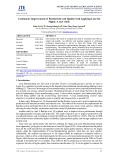
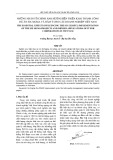


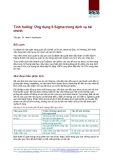
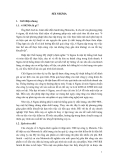



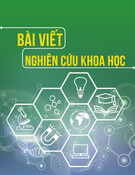

![Tối ưu hóa hiệu suất hệ thống: Bài thuyết trình [Chuẩn nhất]](https://cdn.tailieu.vn/images/document/thumbnail/2025/20251107/hiepdz2703@gmail.com/135x160/35941762488193.jpg)

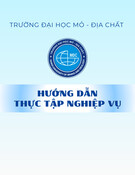

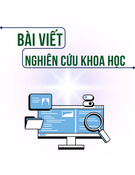
![Bài giảng Quản trị chất lượng trong công nghiệp thực phẩm [chuẩn nhất]](https://cdn.tailieu.vn/images/document/thumbnail/2025/20250805/vijiraiya/135x160/637_bai-giang-quan-tri-chat-luong-trong-cong-nghiep-thuc-pham.jpg)
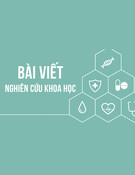
![Đề cương bài giảng Kỹ năng hoạt động công nghiệp [mới nhất]](https://cdn.tailieu.vn/images/document/thumbnail/2025/20250715/kimphuong1001/135x160/76971752564028.jpg)
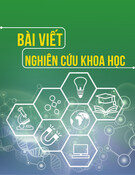
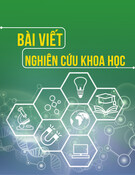
![Bài giảng Kỹ thuật điều độ trong sản xuất và dịch vụ [mới nhất]](https://cdn.tailieu.vn/images/document/thumbnail/2025/20250630/dcbaor/135x160/13121751251866.jpg)


